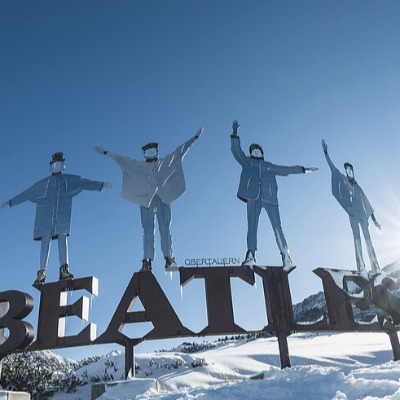Climate Change Threatens Europe's Ski Areas - Journal "Nature Climate Change" Says Austria Better Prepared

Will skiing be possible in Austria if global warming reaches +2° or +4° Celsius? LIFE researchers are involved in a newly published publication on the effects of climate change on European ski tourism in the journal "Nature Climate Change".
Warmer temperatures due to climate change will probably have a massive impact on European and of course Austrian ski areas in the coming decades. More than half of 2,234 European ski resorts analyzed will be at a "very high risk" of insufficient natural snow supply if global warming reaches two degrees Celsius. At four degrees Celsius, almost all ski areas are affected, according to a new study by JOANNEUM RESEARCH - Institut LIFE in cooperation with Météo-France, CNRS - Center national de la recherche scientifique and Institute for Agriculture, Food and Environment (INRAE).
The study in detail:
Ski tourism is a key economic sector in mountain regions in Europe and is unfortunately increasingly vulnerable to a shortage of snow due to climate change. However, the risk of snow supply from climate change to ski tourism has not yet been consistently quantified across Europe, including the impact and ecological footprint of artificial snowmaking systems. This study shows that the risk of snow supply for ski tourism increases with the degree of global warming, and is heterogeneous within and between mountain areas and countries. 2,234 ski areas in 28 European countries were examined and the results showed that at 2 degrees Celsius of global warming without additional snowmaking, 53% of ski resorts will be at very high risk of snow shortages. The risk of a lack of snow at 4 degrees of global warming would increase dramatically to 98%. In contrast, assuming partial snowmaking coverage of 50% leads to a corresponding reduction in the risk of snow poverty. This would then apply to 27% (at +2°C) and 71% (at +4°C) of European ski areas, but with an associated increase in water and electricity requirements and the associated CO2 footprint from snowmaking systems. However, this only accounts for a modest fraction of the total CO2 footprint in ski tourism as a whole.
Austria does better in comparison, as in our part of the world snowmaking was used relatively early on in order to save ski areas. In Austria, 294 ski areas were examined in this study and it was found that with two degrees of warming plus 50 percent snowmaking, around three percent of Austrian ski areas will still have a high risk of snow poverty. At three degrees it is 13 percent and at four degrees it would be 38 percent of the Austrian ski areas that would be affected by a very high risk of a lack of snow despite snowmaking.
Study “Climate change exacerbates snow-water-energy challenges for European ski tourism”
Published in “nature climate change” journal August 28, 2023 Hugues François, Raphaëlle Samacoïts, David Neil Bird, Judith Köberl, Franz Prettenthaler, Samuel Morin













